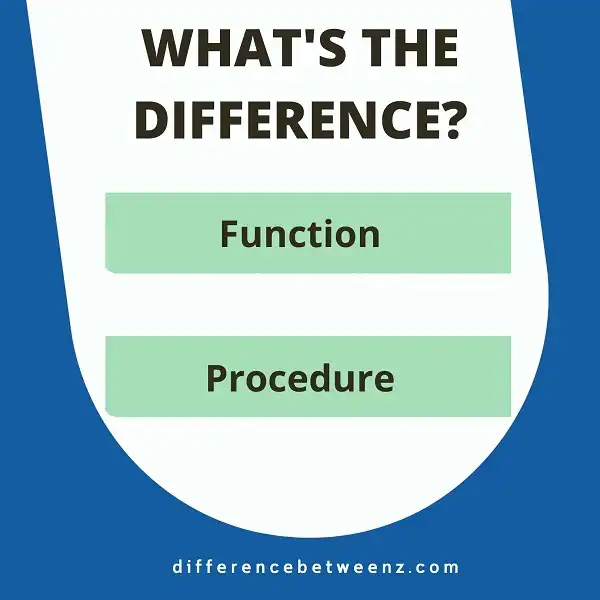In computing, a function is a set of statements that performs a specific task. Procedures are slightly different in that they are able to accept input arguments, but both serve the same purpose: to allow a programmer to modularize their code and make it easier to read and maintain. In this article, we will take a look at the difference between functions and procedures, and discuss some of the benefits of using each one.
What is Function?
A function is a self-contained block of code that performs a specific task. Functions are commonly used to encapsulate reusable code, making it easy to call the same code multiple times without having to rewrite it each time. Functions can also be used to divide a large program into smaller, more manageable pieces. In many programming languages, functions can be passed arguments, which are values that are passed into the function that can be used to customize its behavior. Functions can also return values, which are typically the result of the task that the function performs.
When creating a function, the programmer must specify its name, what arguments it takes, and what type of value it returns. Once a function has been created, it can be called from within another code by simply specifying its name and passing any required arguments. Function calls can be nested, meaning that one function can call another function, which can call yet another function, and so on. By nesting function calls in this way, programmers can break down complex tasks into smaller, more manageable chunks.
What is Procedure?
Procedures, also known as subroutines or functions, are a fundamental building block of programming. A procedure is a self-contained routine that takes some input, performs some calculation or action, and produces some output. Procedures can be used to break a complex problem into smaller, more manageable pieces. They can also be reused in different parts of a program, or even in different programs altogether. In most programming languages, procedures must be written before they can be called.
This allows the compiler to generate the necessary code to execute the procedure when it is called. It also ensures that all the required information is available when the procedure is executed. As such, careful planning is essential when designing procedures. However, the benefits of using procedures far outweigh the drawbacks. By making use of well-designed procedures, programmers can produce more reliable and efficient code.
Difference between Function and Procedure
Functions and procedures are two terms that are often used interchangeably, but there is a subtle difference between the two. A function is a self-contained piece of code that performs a specific task and returns a value. A procedure, on the other hand, is a subroutine that performs a specific task but does not return a value. In general, Functions are used when there is a need to compute a value, while procedures are used when there is a need to perform an action. However, this is not always the case, and it is sometimes possible to use either a function or a procedure for either purpose. Ultimately, the decision of whether to use a function or procedure depends on the specific needs of the program.
Conclusion
In conclusion, it is important to understand the difference between a function and a procedure. Functions are mathematical operations that take one or more arguments, while procedures are blocks of code that can be called from other functions or modules. Understanding this difference will help you write clearer and more concise code.


